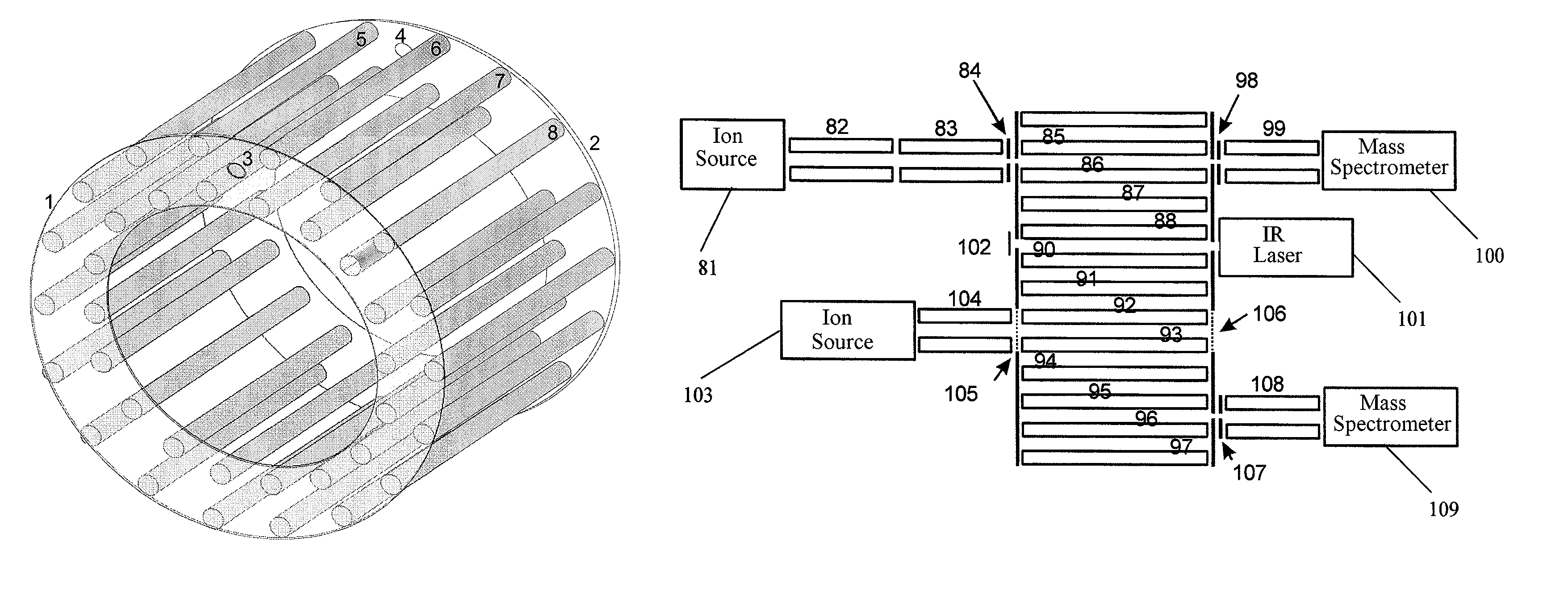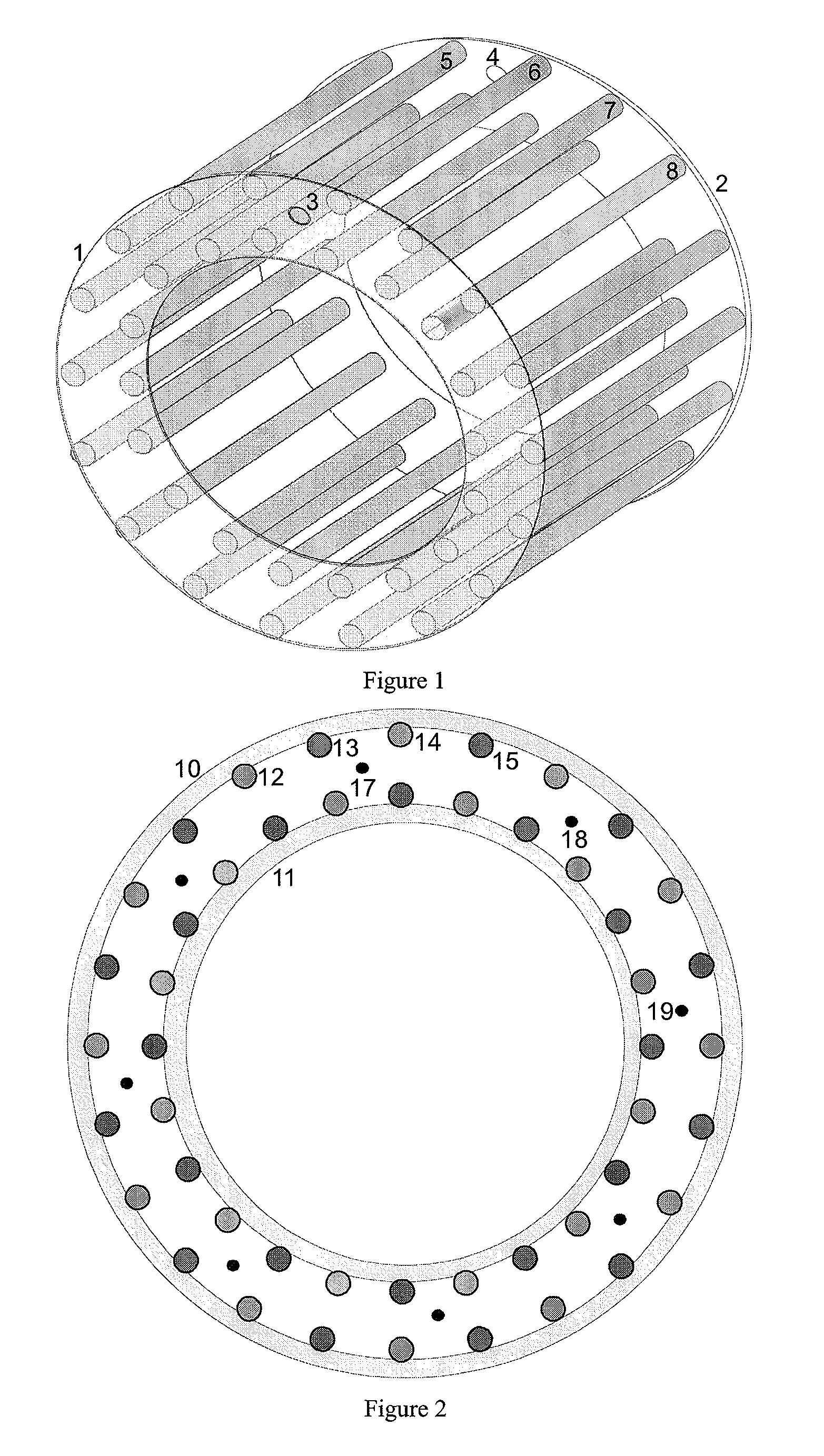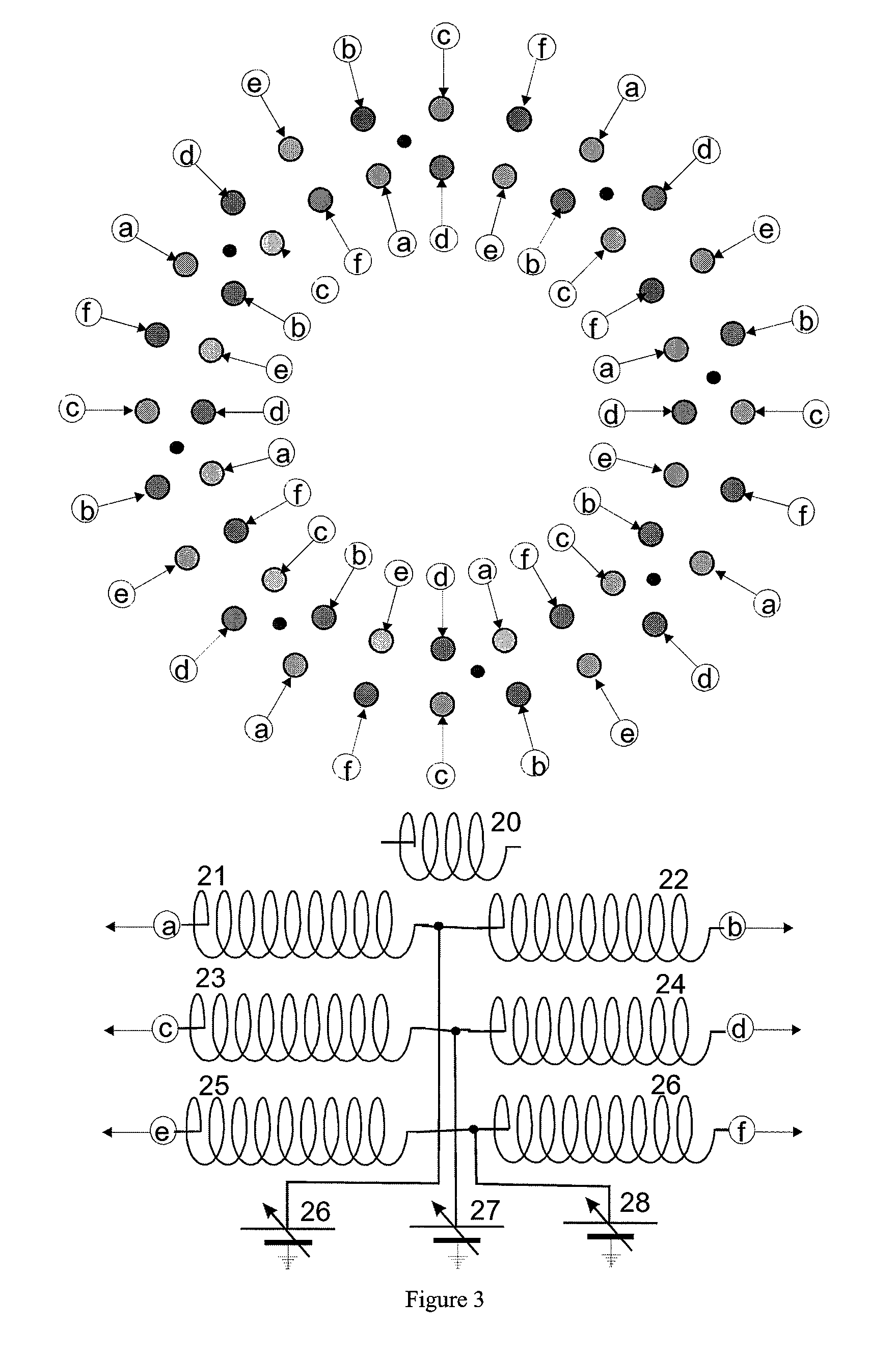Storage bank for ions
a technology of storage bank and ions, which is applied in the direction of mass spectrometer, stability-of-path spectrometer, separation process, etc., can solve the problems of not being able to store identical fractions of ions, not having commercially available mass spectrometers which can record and deliver a hundred or more spectra, and accumulating ions
- Summary
- Abstract
- Description
- Claims
- Application Information
AI Technical Summary
Benefits of technology
Problems solved by technology
Method used
Image
Examples
Embodiment Construction
[0033]Ions may be transferred ion-optically from a feed with good focusing properties into ion storage devices with any configuration, as shown schematically in FIG. 7. However, a well-focusing feed in an RF ion guide requires a damping gas inside the ion guide and the ion-optical transfer requires a collision-free region (i.e., a good high vacuum). The ion storage devices, on the other hand, require a damping gas to operate without losses. This type of transfer presents a vacuum problem that can be solved by pumps with extremely high evacuation power. Even then, the transitions between the spaces at different pressure, which require very small apertures, create ion-optical problems. This type of storage bank must therefore be rejected because of the vacuum problems. A solution must be found which transfers the ions from the feeding ion guide into the storage cells without changing the prevailing gas pressures.
[0034]It would also be possible, in principle, to arrange parallel storag...
PUM
 Login to View More
Login to View More Abstract
Description
Claims
Application Information
 Login to View More
Login to View More - R&D
- Intellectual Property
- Life Sciences
- Materials
- Tech Scout
- Unparalleled Data Quality
- Higher Quality Content
- 60% Fewer Hallucinations
Browse by: Latest US Patents, China's latest patents, Technical Efficacy Thesaurus, Application Domain, Technology Topic, Popular Technical Reports.
© 2025 PatSnap. All rights reserved.Legal|Privacy policy|Modern Slavery Act Transparency Statement|Sitemap|About US| Contact US: help@patsnap.com



